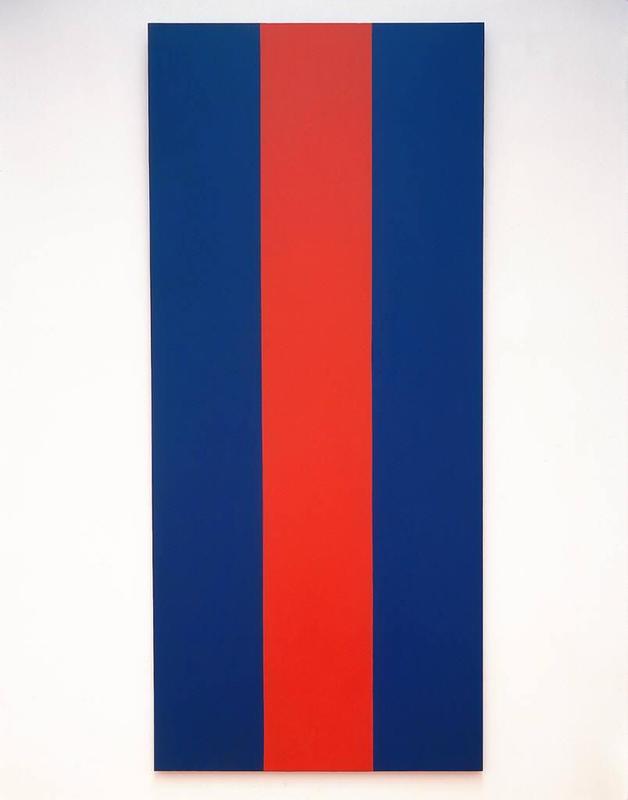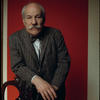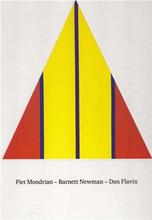In 1989, Barnett Newman’s Voice of Fire sparked a heated debate in Canada.
On the surface, this is a story about people getting frustrated with the simplicity of minimalist artwork, but when you dig a little deeper, the story becomes much more about one country’s deep-rooted jealousy over the other, and the long road both of them have to walk to mend the fences.
Barnett Newman was born in New York in 1905. An artist from an early age, Newman lived through two World Wars, and was undoubtedly influenced by them. But at first, he did more teaching than painting. In his early years, he was close friends with Mark Rothko and Jackson Pollock. After WWII, he picked up the brush more frequently as he was inspired by Surrealist movement. And in the years to follow, his style continued to get more and more minimal, until his name started to become synonymous with works that resembled Voice of Fire.
In 1967, Newman created the infamous painting and sent it to Montreal for Expo 67 (another name for the World’s Fair). It didn’t catch much attention, but that’s understandable because from a certain perspective, it’s just three lines painted in two different colors. And it was also on display at the geodesic dome, so people were probably paying more attention to that than anything else.
Fast forward to 1989 when the National Gallery of Canada paid $1.8 million for the painting and Canadians collectively blew a fuse. Now I’ve gotta be clear, it’s not necessarily the price that irked everyone, but when you couple that price with a painting of three large stripes in a world where your everyday person doesn’t really pay attention to the deeper meanings behind some works of art, then that’s how you get people walking into museums scoffing at Voice of Fire, claiming that they could make the same thing in 10 minutes for 20 bucks. They’re not necessarily wrong, but there’s a more nuanced reason as to why Newman’s piece is considered art. For so long, due to politically driven agendas in other countries, artists were relegated to creating certain types of art or else they’d be labeled as a degenerate or a dissident. So during the post-war period, artists, particularly in America, explored more abstract or minimal avenues of art and painting because they had the freedom to. It was revolutionary to paint three lines with only two colors, simply because some people weren’t allowed to.
Another problem with the painting was that it was done by an American. And there is a storied history of Americans feeling like they’re better than Canadians, and Canadians feeling like they exist to do the things that Americans can’t do right. There’s a lot of animosity there. Yeah, someone probably could do a version of Voice of Fire for a whole lot cheaper. But the painting, and its previous relationship with Canada at the World's Fair, made it something that the National Gallery thought might be a sweet sentiment. This sweet sentiment was not enough for angry Canadian folks in 1992 when, perhaps proving their point, it came to light that in 1992, when the work was first acquisitioned, the museum had displayed it upside down.
At the very least, whether you love it or hate it, Voice of Fire lit an actual fire under the citizens of Canada who felt like their definition of art was more valid than the piece of art itself. There’s nothing wrong with them feeling that way. Especially when it opens up a dialogue that enables people to talk about art when it otherwise might not even cross their minds.


















Somehow it's 1989 and Canadians still haven't figured out that art can be anything? Also it was only 1.8m, that's not even that much for artwork!